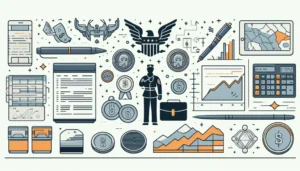I love using my credit cards to earn miles, points, and cashback. But when you travel internationally, places you visit won’t always accept credit cards. This is why you need to have cash available while traveling. But how do you avoid fees when getting cash when traveling abroad?
While traveling, the best option is to use your rewards credit card to pay for purchases. This will ensure you get the best exchange rate, offer the most protection in case of a dispute, and earn miles and points towards your next vacation. But cash can get you the best discounts when negotiating, so it pays to have a way for easy access without a lot of fees.
If you do use a credit card overseas, watch out for foreign transaction fees. This is an additional fee that some credit cards charge when they convert currencies. Here’s a list of cards that do not charge foreign transaction fees. These are great cards to use while you are out of the country.
Avoiding fees to get cash when you are traveling abroad means that you will need to look at paying in local currency, watch out for foreign currency conversion fees, know how to get cash when traveling, and understand how to use international ATMs for less.
TABLE OF CONTENTS
- Should You Pay In Local Currency?
- Watch Out For Foreign Currency Conversion Rates
- How Do You Get Cash When Traveling Internationally?
- How To Use An International ATM For Cheap
Should You Pay In Local Currency?
Do you even need local currency? The honest answer is, it depends.
Paying with local currency shows that you are trying to assimilate with local customs. However, sometimes paying with US dollars is better because it is a more powerful currency. This is especially true when dealing with street vendors in regions of the world where their local money is not good outside of their own country.
I prefer to have a mix of local currency and American dollars so you can pay with whatever money works to your advantage the most.
Watch Out For Foreign Currency Conversion Rates
Whether paying in cash or with your credit card, watch out for inflated foreign currency conversion rates. When a vendor offers to charge you in US dollars as a “convenience,” it is an easy way for them to make a little extra money on you.
I was recently in Cancun with my wife for a long weekend. When grabbing a drink at the bar while waiting for our ride, the sign showed 18 pesos equals $1 US dollar. Using the Oanda currency app on my phone, at the time that this post was written the rates were 20 pesos per $1 US dollar. If I had paid in US dollars, my bill would have been inflated by 10%.
The math goes like this: actual rate / stated rate by vendor = price inflation. In other words, a $10 drink would be $11 if you paid them in US dollars. Sure, $1 may not be much. But imagine how much it would add up to if you spent 10% more on everything you bought throughout a weeklong vacation?
The bottom line is that it is almost always better to pay in the local currency.
How Do You Get Cash When Traveling Internationally?
When you’re on an international vacation, there are several methods to get local currency.
- Order foreign currency from your local bank branch
- Convert currency at the airport
- Exchange currency at your hotel
- Receive change in local currency
- Withdraw money from an ATM
Each of these options has positives and negatives about them. Let’s discuss the pros and cons to figure out which approach is the one you should take.
Order Foreign Currency From Your Local Bank Branch
Many people don’t know this, but most major banks allow you to order foreign currency. Submit your request at least a week in advance because it can take a few days for your local branch to receive the money. Banks often charge for this service, so make sure that you understand the fees that they charge before you give final approval.
One problem with exchanging currency before your vacation is that you don’t know how much you’ll need for your vacation. To me, an even greater concern is that you’ll be walking around with a big wad of cash in your pockets.
Border patrol and police are always on the lookout for suspicious activity, and large amounts of cash could spike their interest. Plus, pickpockets and thieves love targeting unsuspecting tourists.
Convert Currency At The Airport
When you arrive at an international airport, there are plenty of signs offering to exchange your currency. This is one of the worst places to convert your US dollars into local money. Remember that airport real estate is expensive, and their only product is money.
They need a big spread on the conversion to pay their rent, cover their expenses, and make a profit. Who pays for all of that? The tourists that convert money with them. Don’t let that be you.
Convert Currency At Your Hotel
At some luxury hotels, they will convert small amounts of a guest’s currency as a courtesy. Other hotels charge a small flat fee or mark up the exchange to compensate them for the service. As with any conversion, pay attention to their exchange rates to ensure it is a good deal.
With more hotels cutting back on services as the world goes digital, fewer hotels offer this benefit. I don’t use this approach too often, but it is nice to know it may be available if you’re staying at the right hotel. Speak with the hotel concierge to find out if your hotel offers foreign currency exchange.
Receive Change In Local Currency
While shopping in the local markets or buying something from a street vendor, if you pay with US dollars, you will likely receive local currency for your change.
This will generally yield a horrible conversion rate. But your ability to negotiate with small shops and street vendors will typically offset any unfavorable foreign currency conversion rates. Besides, the amount of money involved here is pretty small. Don’t sweat the small stuff.
Withdraw Money From An ATM
My favorite method of getting local currency while traveling is the ATM. Yes, I understand that most ATMs will be out of the network and charge hefty fees. But banks tend to offer the best foreign currency exchange rates of any available option.
There are a couple of tricks to this method. First, the ATM must be affiliated with a big bank. Don’t use a shady-looking ATM. And, second, use a debit card that reimburses you for foreign ATM fees.
Although there are several ways to get foreign currency, using a bank ATM with a no-fee ATM card is the best option.
How To Use An International ATM For Cheap
ATMs are an instant source of cash whether you are home or abroad. But international ATMs can charge fees of 1% to 3% of the cash you’re withdrawing if you don’t use the right ATM card.
When I travel, I always carry my Charles Schwab ATM card. It allows me to pull cash from any ATM around the world without fear of nasty fees. Schwab doesn’t charge fees for using another bank’s ATMs. And they will reimburse you if the ATM charges a fee for withdrawing money.
There are a few other financial institutions that will reimburse for international ATM withdrawals on select account types. This benefit is often reserved for clients in higher-tier checking packages or who have relationships above a certain level. Checking account packages change on a regular basis, so speak with a banker at these institutions to research which accounts currently offer these benefits.
- Fidelity Cash Management
- First Republic Bank
- PNC
- TD Bank
Citibank is another option to consider. They charge for using another bank’s ATMs, but Citibank has a global presence with over 4,600 branches worldwide. Plus, they have ATMs in over 20 countries. There’s a good chance that Citibank has a branch or ATM in the country that you are traveling to.
Top Travel Rewards Offers
Top Travel Card
Details: $95 annual fee | Earn 60,000 bonus points after you spend $4,000 on purchases in the first 3 months from account opening.
Most Flexible Travel Card
Details: $95 annual fee | Enjoy a one-time bonus of 75,000 Miles once you spend $4,000 on purchases within 3 months from account opening
Best Card for Side Hustlers and Business Owners
Details: $95 annual fee | Earn 100,000 bonus points after you spend $8,000 on purchases in the first 3 months from account opening.



